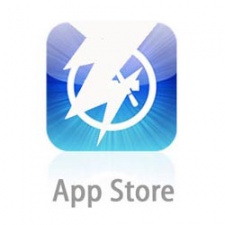According to numerous blog posts on the Linkedin profiles of various industry insiders, it would seem as if Apple killed User Acquisition, or at the very least, Burst Campaigns.
Such outlandish claims surface pretty much every time Apple changes something to its App Store featuring or charting policies.
As it turns out, Apple already killed UA when it stamped on incentivized traffic in 2011, then again after banning AppsGratis from the App Store in 2012.
Apple has been on such a murderous spree in the last few years that you’d be left wondering how many times User Acquisition can be killed.
But maybe User Acquisition is a game character with unlimited lives. Either that or those death claims have been widely exaggerated. Let’s delve a bit deeper.
Apple's Policy Change
Factually, what Apple has done is remove the possibility for games to surface among the featuring slots of a category page based only on data. From now on, these lists will be curated by Apple editorial team rather than algorithms, in the same fashion as the main page.
Therefore, a fast rise in installs will no longer automatically land your game on one of these placements as it would have in the past.
If Apple staff judges the quality or relevance of your game to be lacking, based on their undisclosed internal list of criteria, your game will be weeded out of the selection no matter how many times it was downloaded today.
What this means for Burst Campaigns
A Burst Campaign consists of acquiring cheap and low-quality users, often from incentivized traffic sources, in sufficient amounts within a short time frame (less than a day) so that the app will rise up the App Store charts.
Apple’s intent is merely to clean up shop and prevent weird clone apps, with parasite titles looking like a keyword phrase, from polluting its highest quality digital real estate.
When surfacing in the top 10 or reaching the top of a category, the app will see an organic uplift that offsets the cost of buying poor traffic.
It’s the modern day digital equivalent of major record labels mass-purchasing the albums of their latest “breakthrough band” to bring it up the billboard charts, as it was common practice in the 1960s through to the 1980s.
It’s all based on the human nature principle that “masses want to buy what’s already successful”. The best detailed resource about how such burst campaigns are executed in the app world remains Eric Seufert’s “Trampoline Launch” slide deck.
An added bonus of trampoline launches (at least before last week’s Apple policy change) was that if it was done during a launch week, a burst campaign could get the app trending and subsequently featured algorithmically in certain sections of category pages, thereby increasing the organic uplift a notch.
This was a way to hedge your bets in launch week, in case Apple’s editorial team didn’t find your app worthy of a front page featuring.
In essence, burst campaigns still work, in the sense that their primary objective had been in chart-chasing. This is where burst campaigns can be sustained and scaled as a pillar of a good marketing mix.
What has disappeared is only the one-off effect of maybe getting featured in category, which should always have been a secondary target, given that there is a bit of luck involved, and more importantly because this added bonus element has such little impact on a sound long-tail plan.
What this means for End Users
When reading one-sided complaints from “marketers” about Apple policy changes, it’s quite surprising how the consumer benefit of this policy shift is completely ignored.
Apple’s intent here is merely to clean up shop and prevent weird clone apps, with parasite titles looking like a keyword phrase, from polluting its highest quality digital real estate.
Putting my gamer’s hat on for a minute, I can only applaud this effort. If anything, this will make my search for high quality apps more convenient as I will need less time scrolling through turds to find gems.
Will maybe a couple of gems slip through the cracks and not get discovered by Apple’s editorial team?
Yes, that is a risk for a very tiny percentage of games and apps, which maybe the algorithm would have saved, and which deserved to be saved.
Is this sad for the developers behind it? Yes, absolutely. But it’s not the end of the world for them either, if you take discovery into perspective.
Two principles
There are two great principles of marketing that one learns through failures and experience: “Marketing starts with having a great product” and “There’s no such thing as a silver bullet”.
My view about the first principle is that if you are truly selling a great product, then getting featured by Apple in your debut week should be within reach on editorial merits, and even if that doesn’t happen, it shouldn’t be all that critical.
If your product is already great, then working hard on marketing it, without counting on Apple for discovery, will eventually pay off
Because there is another week after your launch week, and during that second week, and the weeks after, there are many other marketing techniques you can pursue. Some of these techniques are as cheap as improving your in-game social integration to boost viral sharing.
If your product is already great, then working hard on marketing it, without counting on Apple for discovery, will eventually pay off.
If your product isn’t great, then ask yourself this key question, from a consumer perspective: Why should it be discovered in the first place? Your first priority right now is not marketing, but product refining and service improvement.
Now comes the second principle: “There’s no such thing as a silver bullet”.
A good marketing plan has always been and always will be a mix of activities that feed and complement each other. So if all you were doing to promote your app was burst campaigns, then you were stuck on a single technique, which has been black-listed and combatted by Apple since 2011.
Don’t get me wrong. I have used this technique myself and am not one to shy away from black hat tricks while they work, so it’s not on ethical grounds that I’m challenging your thinking here - I’m evangelizing diversification.
Widen your marketing mix
There are many other leads to look into.
Did you realize, for example, that if you have $50,000 to throw around on burst campaigns, you actually have enough to secure a high-profile YouTuber who likes your game, to endorse and demonstrate it through a public video?
Such a stunt not only has the same immediate effect in charts as a burst campaign, but it also builds true brand equity and sometimes a “social moment” on top.
The narrow focus on app-to-app advertising in all forms is precisely what has led the CPI rate on these channels to be constantly on the rise, which renders this UA approach unsustainable to most in consequence.
This, much more than Apple’s App Store policies, is what's killing performance-based UA.
It has gotten to a point where even TV commercials, billboards and bus-stop posters have become comparatively more affordable acquisition vehicles.
Nowadays smart marketers working for thriving publishers have realized that dependency on CPI-driven campaigns for games is about as fatal on the long-run as dependency on foreign oil is for a nation.
Yes, you should eat your vegetables and use all the latest metrics-driven techniques. But a good balanced diet also needs some sugar and proteins.
You’d be thus well advised not to ignore all the research work that preceded the data-driven era - some of the stuff from the days of Mad Men days and David Ogilvy still works wonders.






















